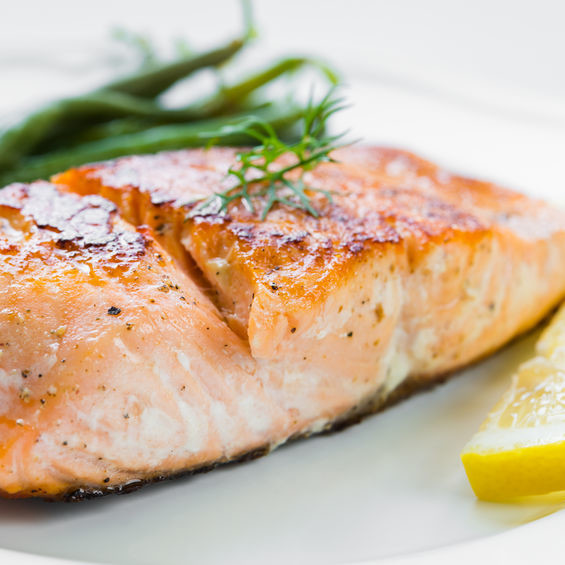
Fish Allergy
What is a Fish Allergy?
Fish allergy is a subcategory of seafood allergies that stem from an allergic reaction to a low molecular weight and soluble protein called parvalbumin. This protein is found in a wide variety of finned fishes.1
Although many types of fish have this protein, the most common fish allergens are derived from:1,2
- Pollock
- Salmon
- Cod
- Tuna
- Snapper
- Mackerel
- Tilapia
Unlike other food allergies (e.g. milk, egg, wheat and soya), fish allergies usually start in adulthood and are never outgrown (become lifelong).
How does it work?
The parvalbumins family comprises two distinct subtypes, known as α- and β-parvalbumins. Although, the 3D-structures of both subtypes are very similar, all fish allergens belong to the β-parvalbumin family.3
Parvalbumins represent the second-largest animal food allergen family and are abundant in the white muscle of many fish species, where they have a role regulating free intracellular calcium levels, which are important for muscle functions.
Application
There appears to be no clinically relevant allergic cross-reactivity between shellfish and fish. Parvalbumins are the major allergen in fish species and tropomyosin in crustacean and mollusks.
Cross-reactivity between fish and shellfish is common, therefore people diagnosed with a fish allergy often have to avoid all fish or all shellfish. Individual IgE (Immunoglobulin E) testing is advisable before consuming other types of fish or shellfish if the person has an established seafood allergy.1
Effects of processing on fish allergenicity
Fish allergens are generally considered to be stable to cooking and other thermal processing methods, with parvalbumin proteins being particularly resistant to acidic pH, heat denaturation/degradation and proteolysis.
An explanation for this is that the structure of parvalbumin unfolds at elevated temperatures but then is able to refold during cooling (calcium ions must be present for this to occur), thus regaining its native reactive conformation. This thermostability clearly contributes to the ability of this major fish allergen to retain its allergenic properties after cooking.1,2,3
Prevention of allergenic events in consumers
At manufacturing and retail level, compliance of prerequisite GMP programs is key. The following strategies can be considered:
- Cross-contamination prevention (shared processing lines and shared shelf display)
- Strict cleaning, allergen testing and validation procedures
- Segregation of allergenic raw materials
- Hygienic equipment design
- Allergen training for food handlers (plant personnel)
- Validation and verification of “allergen-clean” SSOPs
- Label control programs
There are many common products that may contain fish including:
- Cesar salad dressing
- Worcestershire sauce
- Ceviche
- Gelatin (from fish)
- Certain cuisines (mainly African and Asian due to potential cross-contamination with fish)
Fish allergens can be managed by excluding fish from the diet and always having proper medication available. People with fish allergies are advised to avoid consuming fish and anything that comes in contact with fish. In addition, people with fish allergies should avoid restaurants that have high chances of cross-contamination, such as seafood restaurants.
Symptoms of fish allergies
Symptoms of fish allergies include tingling mouth and lips, gestational discomfort, rash, asthma attacks, and most severely, anaphylaxis. Anaphylaxis can be life threatening if not treated immediately with the use of epinephrine, and any other medication prescribed by a physician such as a rescue inhaler.
FDA Regulation
Labeling of fish is regulated by the Food Labeling Consumer and Protection Act, which requires any packaged product be clearly labeled as “containing fish.” People with food allergies are recommended to learn the names of many allergen-containing fish so they won’t become confused when reading labels.
References
- Mills, C., Johnson, P.E., and Alexeev, Y. “Food Antigens” Food Allergy, Saunders, Elsevier Inc., 2012, pp. 15–32.
- Wong, G.W.K. “Detection and Control of Fish, Shellfish and Molluscs as Food Allergens” Handbook of Food Allergen Detection and Control, Woodhead Publishing, Elsevier Inc., 2015, pp. 379–387.
- Mills, C., Johnson, P.E., and Alexeev, Y. “Identification and Characterisation of Food Allergens” Management of Food Allergens, Blackwell Publishing Ltd, 2009, pp. 42–50.

